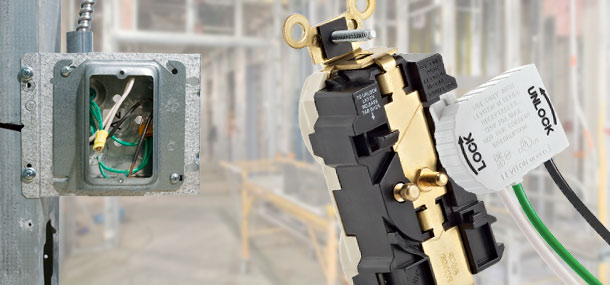Why Modular Wiring?

As our mobile devices continue to evolve at an accelerated rate, the way in which we charge these devices will change as well, ultimately modifying the face of our electrical wiring devices. While technological changes are inevitable, one thing will remain constant in our hyper-connected society: a need for power.
From standard receptacles to the latest trend of USB outlets, there is no guarantee what the next interface will look like. Today’s pace of innovation has made it difficult for architects, engineers, contractors, and home-owners to design and build structures that meet both current and future demands, especially when it comes to a building’s electrical distribution system.
Why Modular Wiring?
In order to better adapt to technological changes and meet consumers’ ever-growing needs, facilities are implementing modular wiring systems. These systems utilize a wiring module and a modular device, such as a receptacle, switch or occupancy sensor, so that on-site installation may be simplified into two steps: connecting the module to the building’s wiring and then connecting the device to the module. All modular wiring systems follow this concept, but connection styles are specific to each manufacturer.
Modular wiring systems were originally developed to allow installers to power circuits for testing prior to finishing the interior drywall, avoiding the potential for spackle or paint to impair the installed devices. Additionally, these systems helped address electrician labor shortages by reducing the complexity of on-site work, by allowing final device installation to be done by an apprentice, rather than an electrician. Everyone from the installer to the end-user can benefit from modular wiring systems.
The Benefits
Efficient Installations
Due to the simplicity of connecting a module to a paired device, modular wiring systems allow for streamlined installation. Whether it’s a twist-and-lock, snap-in, or a push-in connection style, device installation is much quicker than conventional side-wiring methods. Depending on the manufacturer, device installations can be up to 3x faster than traditional wiring. Each device termination requires the same, simple connection, eliminating the potential of under- or over-tightening terminal screws. The simplicity of modular wiring systems means that anyone, from apprentice to master electrician, can safely install these devices by following the manufacturer’s instructions.
Time, Labor, and Total Project Cost Savings
Facilities benefit from time savings, due to streamlined installation which results in labor and cost savings as installers can minimize down time on-site. Not only do modular wiring systems provide cost savings for the installer, but also the end-user, as the potential for trouble-shooting post-installation is reduced.
Many manufacturers of modular wiring systems offer online calculators to help users determine overall cost and labor savings on a project. These calculators analyze the cost of the devices, the quantity of devices, the installation speed (devices per hour), and labor rates of modular wiring and then compare these numbers to traditional wiring to determine the overall cost and time savings.
Future-Proof
Modular wiring systems allow facilities to better future-proof themselves, ensuring the ability to react quickly to changing demands for electrical wiring devices. Whether it be to update devices to the latest trend, or to comply with a new code or requirement, swap outs with modular wiring systems are extremely simple: disconnect the old device from the module and attach the new one. Depending on the manufacturer, device swap outs can be up to 5x faster than traditional wiring, specifically with the twist-and-lock connection style. A future-proof facility provides the flexibility to institute the most up-to-date features and benefits that users demand.
Safety and Functionality Benefits
Because the module connected to the building wiring is secured within a wall recess and the device is attached to the module, it is safe enough for a professional to swap a device while the power remains on. The ability for professionals to make swap outs without turning off a power circuit is extremely beneficial in facilities where the power must stay on at all times, including hospitals, airports, and hospitality facilities.
Modular wiring systems can be used in a wide range of environments, including new construction, commercial applications, health care facilities, educational facilities, hospitality, airports, and even residential dwellings. Whether it be to increase productivity, reduce costs, or improve safety, modular wiring systems are emerging as an increasingly popular option for electrical wiring systems. With a future-proof electrical distribution system, facilities are able to respond fast to changes in technology, meeting both current and future demands for electrical wiring devices.
For more information go to Lev-Lok® Modular Devices


